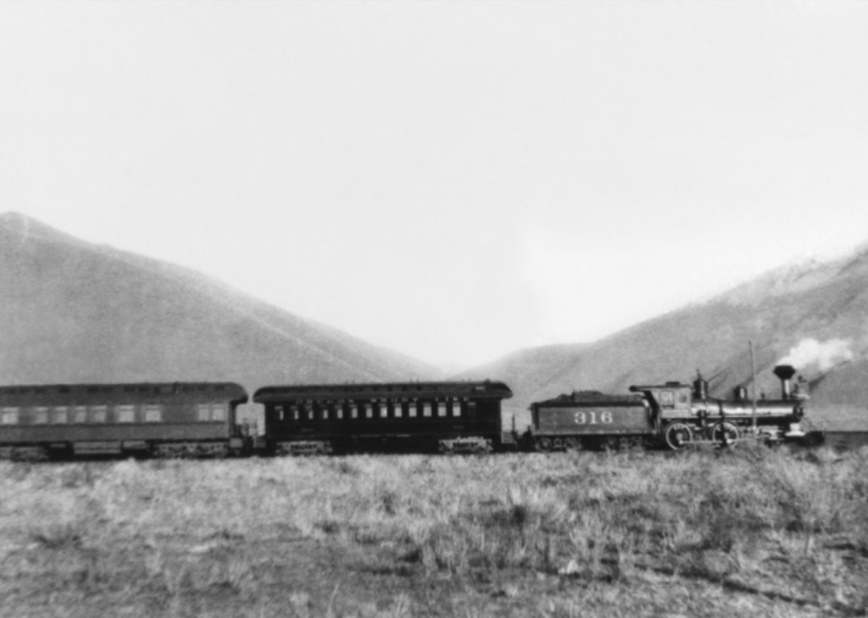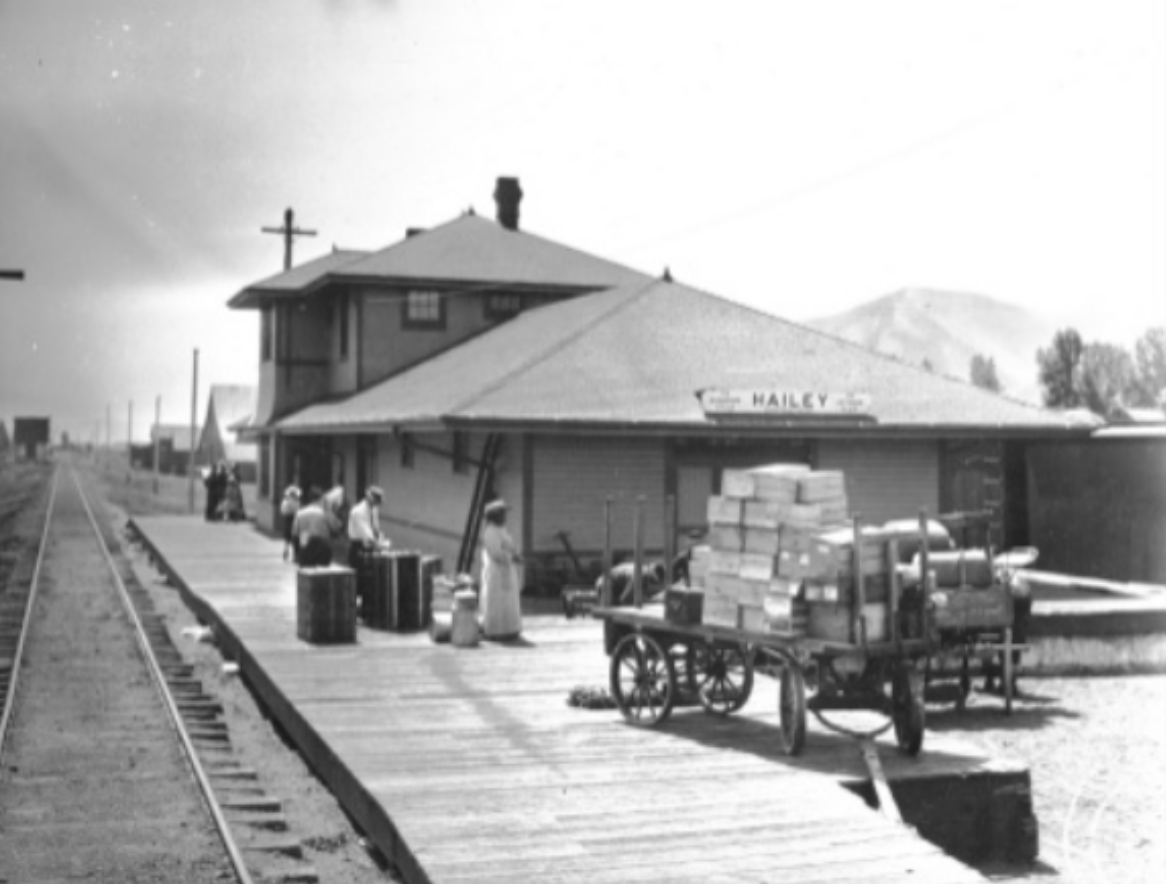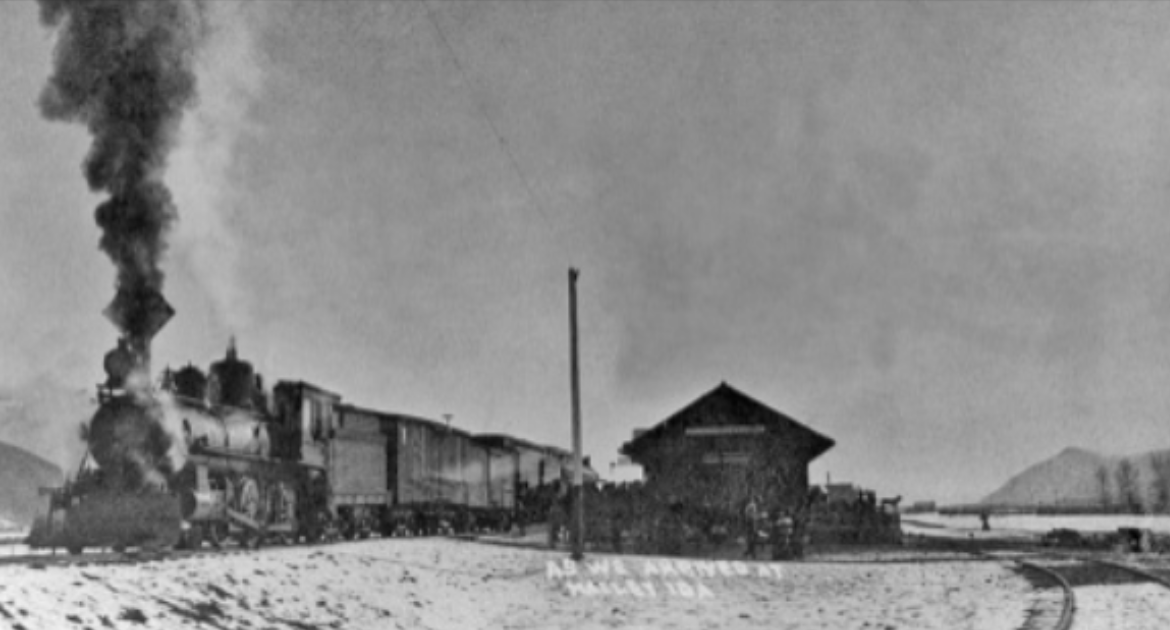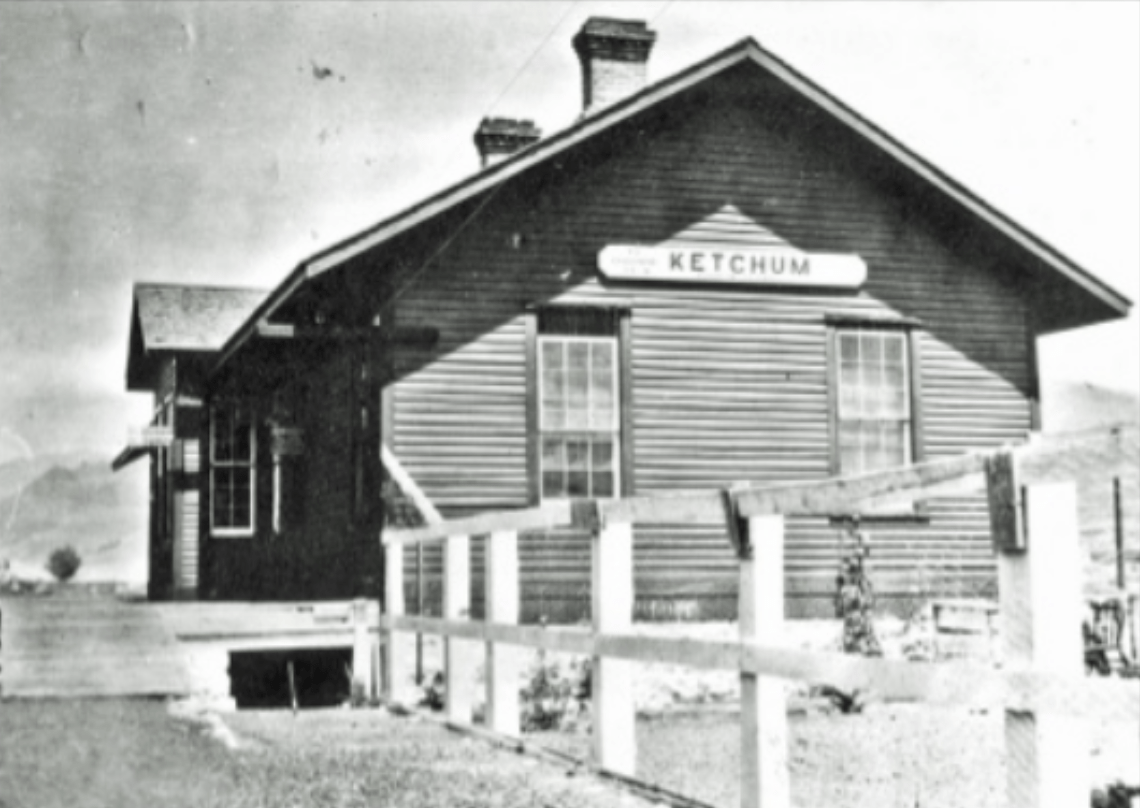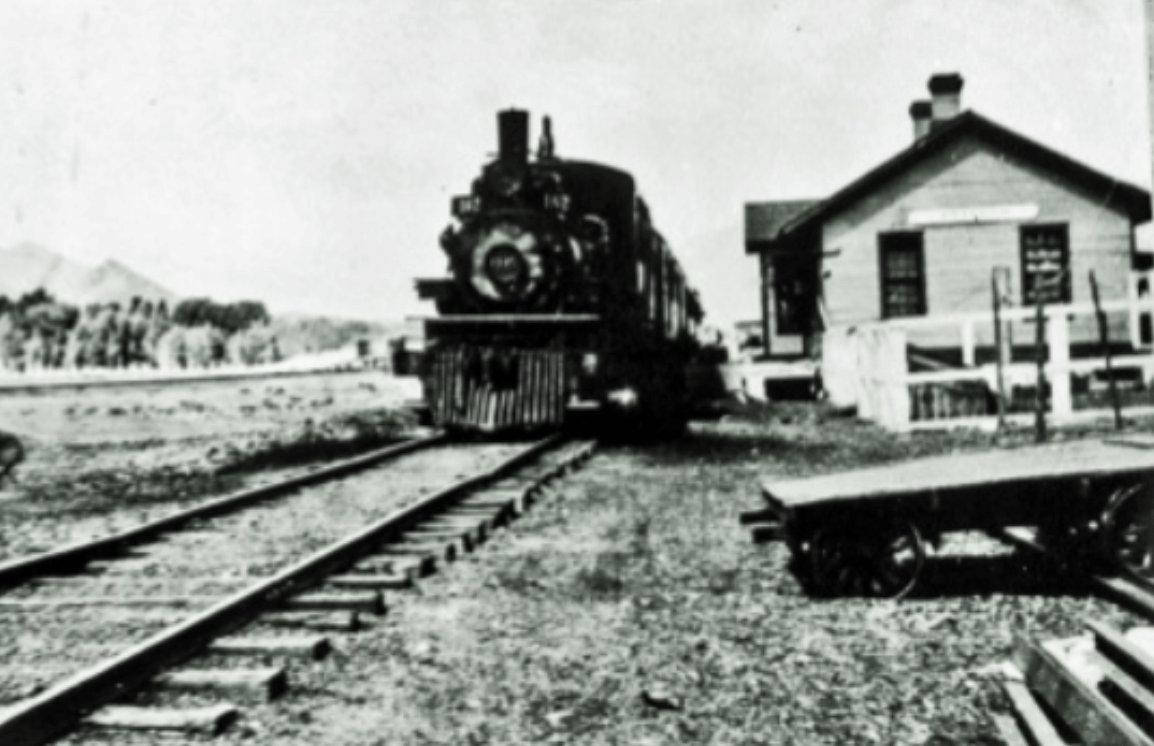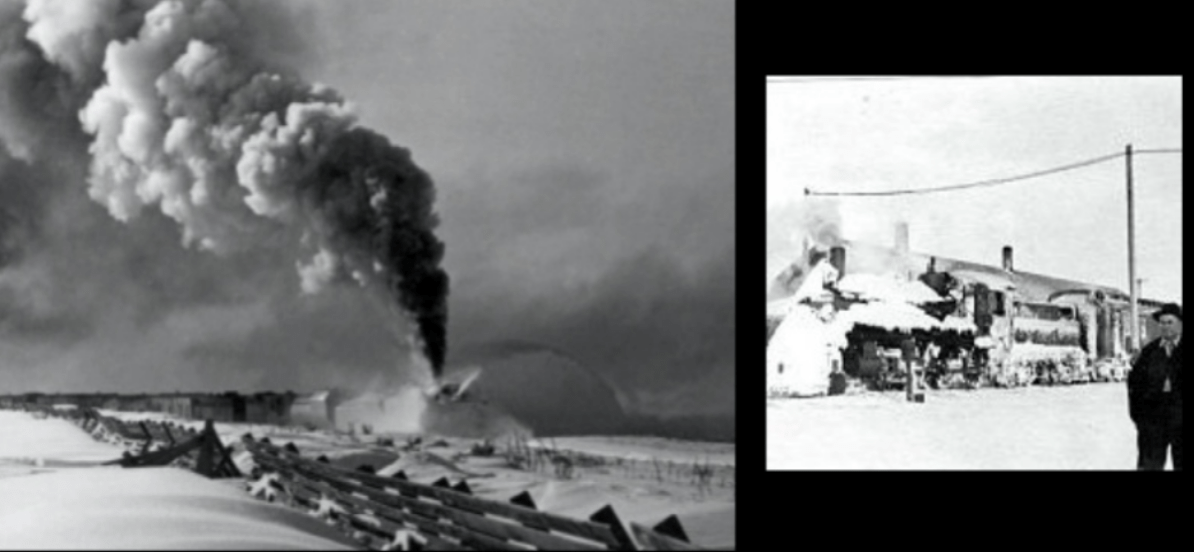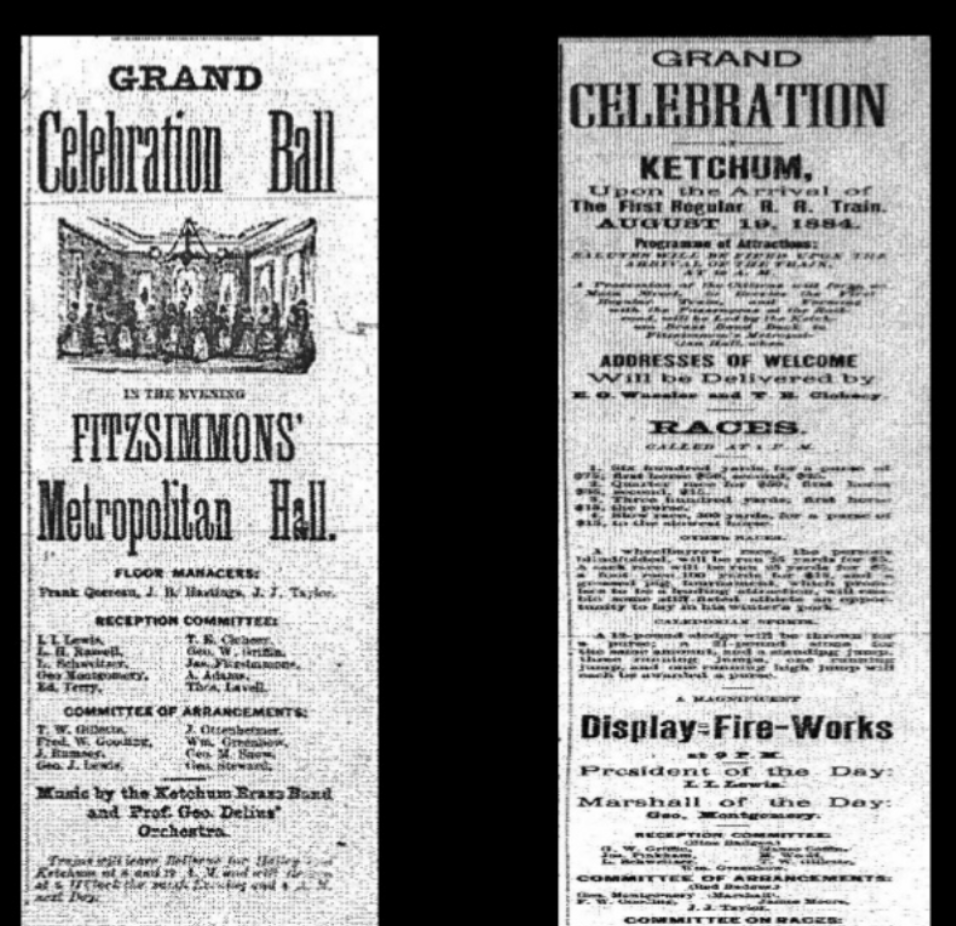A laborious undertaking to bring the rails to Hailey
Although stagecoaches were still useful, another mode of transportation was on the horizon that would ultimately bring the Wood River Valley into the 20th century.
In 1881 the Union Pacific (UP) Railroad began building the Oregon Short Line (OSL) to Portland that ultimately brought a branch to the Wood River Valley (WRV).
The Oregon Short Line in the Wood River Valley – Photo from the Community Library
Investors associated with the UP were buying up potential townsites along the railroad’s projected routes. It also helped that mining was starting to boom in the WRV, and transporting ore out and supplies to the mining locations was critical. In June of 1882, the townsite of Hailey and accompanying Croy and Quigley Ranches were purchased for $100,000. The intention was to make Hailey the terminus for the Wood River branch of the OSL.
The Kilpatrick Brothers’ construction crew of 3,000 men began laying tracks in 1882 from Picabo toward Shoshone and Hailey. Supplies and dynamite brought in by mules over 130 miles, as well as soil to backfill the huge holes left behind from blasting out large rock formations. They battled smallpox and extreme temperatures both during the day and at night. There was very little water. It was a pain-staking process that tested the crews and ended up coming in way over budget.
In 1883 the 69.2-mile branch from Shoshone to Hailey was completed but not without its headaches. On average, a crew could lay a one-mile track in one hour and twenty minutes. But due to the nature of the terrain—hard compacted soil riddled with lava rock, desolate desert land, and even swamps—this particular branch became a huge undertaking. There are numerous accounts from those working on the project stating that in the end, they were grateful to be finished!
Hailey Depot, between Carbonate and Bullion on 5th Ave. – Photos from the Union Pacific Railroad and the Community Library
With the completion on May 7, 1883, a celebration unfolded in Hailey that included a brass band and kegs of beer—along with much discussion surrounding the need for a line to Ketchum. At first, the answer was a resounding no. It would be too expensive to keep the tracks clear of snow and the UP was facing financial hardships. By spring of 1884, the UP changed their minds and the line was extended just north of Ketchum to the Philadelphia Smelter site- the valley’s largest employer at the time.
Ketchum Depot – Photos from the Union Pacific Railroad and the Community Library
And what became of their concerns with snow on the tracks? By 1887 the UP developed a solution- the rotary snowplow, specifically designed to keep the tracks clear.
While the Hailey line was celebrated with a brass band and some beer, Ketchum took it to another level. On Aug. 19, 1884, Ketchum threw a party that included a grand ball, a carnival- featuring horse races, a baseball game, sporting events, speeches, a greased pig tournament, and fireworks.
In the end, there were eight stops from Shoshone to Ketchum, including the towns of Gravel Spur, Pagar, Tikura, Picabo, Bellevue, Hailey, and Gimlet.
Photo from the Idaho State Historical Society
As stagecoaches maintained their purpose, up until the time of the automobile- it was the railroad that had an enormous economic impact on Wood River Valley. When the line arrived it stimulated the mining boom of the time, helped to expedite the flow of capital from Europe (and all over the US) into the valley, allowing it to be declared by Idaho’s territorial Governor “the richest silver-lead producing country in the world.”
Not only did the rail contribute to the local and global economy, it brought the most modern technology to the WRV. Electric light and power, a telephone system at a few locations, and by 1883 Hailey had a water system and 5 daily newspapers were being distributed.
The WRV line would prove useful through the mining boom until the late 1880s. But eventually, it would end, and the UP would go bankrupt. In the 1930s E.H. Harriman would buy UP and OSL out of bankruptcy. Soon after, with the UP developing Sun Valley, the line would experience a resurrection from the mid-1930s until the 1960s.
Eventually, the automobile and air service would become our primary means of travel as it is today, and the line that once ran through the valley was turned into a much-beloved 20-mile recreation trail enjoyed by locals and tourists year-round.

